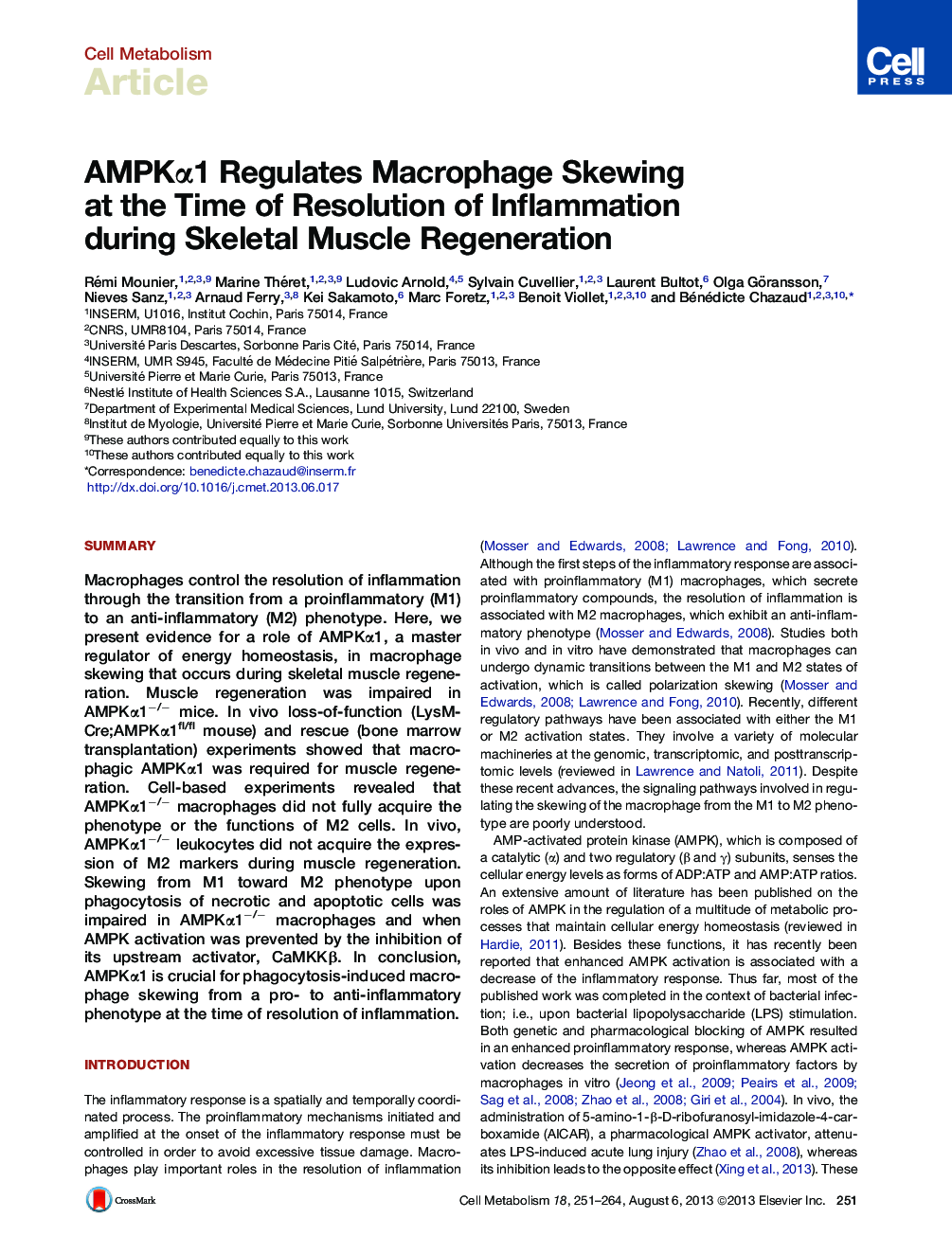| Article ID | Journal | Published Year | Pages | File Type |
|---|---|---|---|---|
| 2792729 | Cell Metabolism | 2013 | 14 Pages |
•Macrophagic AMPKα1 is required for proper and complete skeletal muscle regeneration•In vitro AMPKα1−/− macrophages do not acquire M2 phenotype and functions•In vivo AMPKα1−/− macrophages do not acquire M2 profile during muscle regeneration•Apoptotic cell phagocytosis, a skewing signal, is lower in AMPKα1−/− macrophages
SummaryMacrophages control the resolution of inflammation through the transition from a proinflammatory (M1) to an anti-inflammatory (M2) phenotype. Here, we present evidence for a role of AMPKα1, a master regulator of energy homeostasis, in macrophage skewing that occurs during skeletal muscle regeneration. Muscle regeneration was impaired in AMPKα1−/− mice. In vivo loss-of-function (LysM-Cre;AMPKα1fl/fl mouse) and rescue (bone marrow transplantation) experiments showed that macrophagic AMPKα1 was required for muscle regeneration. Cell-based experiments revealed that AMPKα1−/− macrophages did not fully acquire the phenotype or the functions of M2 cells. In vivo, AMPKα1−/− leukocytes did not acquire the expression of M2 markers during muscle regeneration. Skewing from M1 toward M2 phenotype upon phagocytosis of necrotic and apoptotic cells was impaired in AMPKα1−/− macrophages and when AMPK activation was prevented by the inhibition of its upstream activator, CaMKKβ. In conclusion, AMPKα1 is crucial for phagocytosis-induced macrophage skewing from a pro- to anti-inflammatory phenotype at the time of resolution of inflammation.
Graphical AbstractFigure optionsDownload full-size imageDownload high-quality image (301 K)Download as PowerPoint slide
